Hilltop came top in the packaging redesign category in a competition organised as part of Paris Packaging Week, which takes place in France’s capital at the end of June.
The new design on Hilltop’s labels (below) depict the wines’ flavours and aromas in a clear, memorable graphic which is designed to help even novice wine consumers find their way around the producer’s wide range of varietal wines and choose the right one for their palate.
The redesign, introduced last year, focuses on eight basic flavours and aromas (exotic, floral, herbal, perfumed, mineral, red fruity, stone fruit and white fruity) – with the pattern on the label showing the intensity of each. It’s not the first change of label in the life of the former co-operative winery but it is the most spectacular and biggest step away from traditional wine labels.
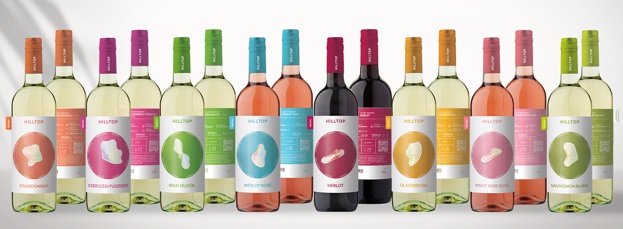
“It’s a bit more youthful, vibrant – closer to our audience,” says Ágnes Ruttkai, Hilltop’s marketing manager. She explains it’s part of the 29-year-old company’s “facelifting process” and desire to educate young consumers. “We wanted to create something that is not only good to look at, but gives something extra to the consumer,” she adds. “We are using the flavour circle of the aroma wheel developed by Dr Ann C Noble, but on the labels they are presented in a clearer, more memorable form… At the same time, it helps to master the science of tasting, it shows what flavours and aromas to look for in the given wine, what to look for when smelling and sipping.”
As well as having a unique aroma pattern, each wine has its own colour – “so Hilltop fans and returning customers can recognise their favourites even from the colour,” Ágnes says.
The judges for Paris Packaging Week’s PLD Innovation Award (for premium and luxury drinks) said they were impressed by the education and information content of the labels, the uniqueness of the labels by wine variety, the beauty of the design, and the excitement of the idea of the aroma circles.
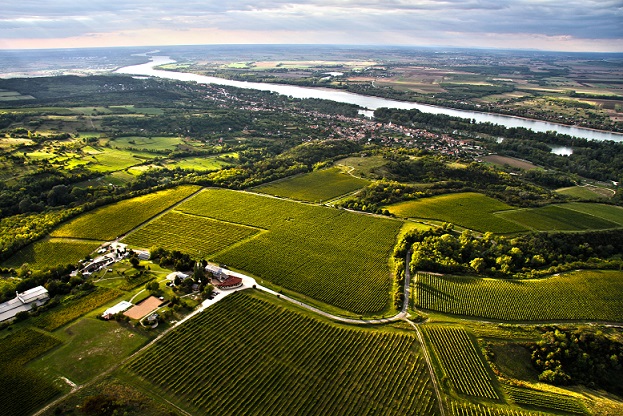
With vineyards on slopes overlooking the River Danube, Hilltop has 220ha under vine between Neszmély and Dunaszentmiklós and 410ha in total around Hungary, producing 6-7m bottles of wine a year in a variety of styles (white, rosé, red, and sweet). The part of the Upper-Pannon wine region around the winery is known for its white wines from international grapes such as Chardonnay, Pinot Grigio and Sauvignon Blanc, but also from Hungarian grapes Irsai Olivér, Királyleányka, Cserszegi Fűszeres, and regional workhorse Olaszrizling.
Hilltop’s premium line is named after its veteran winemaker and one of four co-owners, Ákos Kamocsay Sr.
Chardonnay is his personal favourite and the pride of the winery. I particularly enjoyed the exotic aromas and flavours of the Kamocsay Premium Chardonnay 2019, which has now sold out after winning a ‘white wine of the year award’ in Hungary. The grapes are planted on the northern slopes but benefit from the warmth and sunlight reflected off the water.
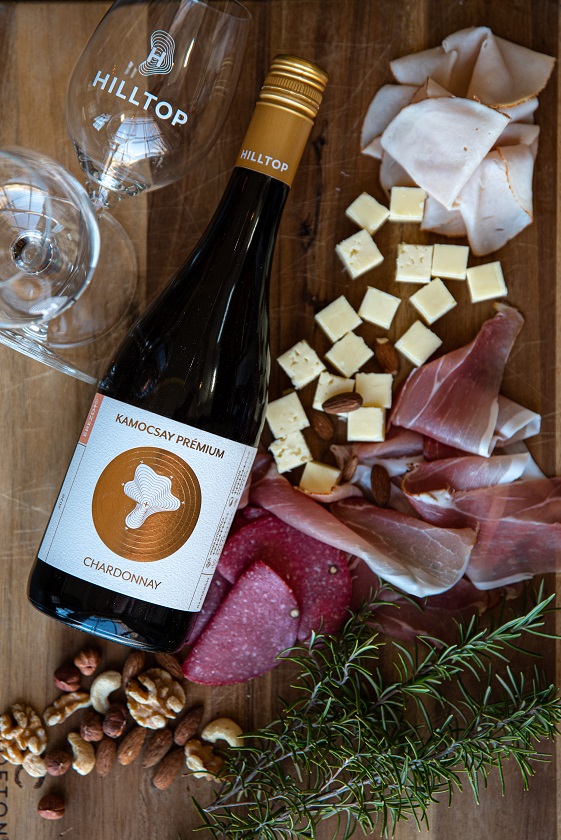
This Birtokbor (‘estate wine’) is a blend from Hilltop’s top vineyards, but Ákos also makes five single vineyard selections to highlight the diverse terroirs of Neszmély’s top ‘crus’: Meleges-hegy (contributing finesse and elegance), Keresztrét (complex, luscious fruit), Urbankó (high-grown, spicier grapes), Faragó (mellow richness with lovely acidity), and Páskom (concentrated, intense flavours).
The machine-harvested grapes from all the sites are processed in the same way – and without the prop of barriques:
- After destemming, they are given a 24-hour cold soak, followed by pressing and 24 hours of settling.
- The must is inoculated with selected yeasts and fermented at a low temperature (12°C) in stainless-steel tanks.
- Due to the high sugar level and low fermentation temperature, the fermentation usually takes at least two months.
- After racking off the gross lees, the wine is kept on fine lees for another three to four months with constant bâtonnage.
- After treatment to stabilise the wine – including chilling the wine to -3°C for a week or so – and filtering, bottling takes place in May.
- After that, the bottles rest in the cellar of the massive winery, largely built into Meleges-hegy (‘Warm Hill’).
Hilltop University Wine Club
As part of the plan to educate young drinkers, Hilltop also dedicates a special lecture to Chardonnay at its university wine clubs “to bring young people even closer to this grape variety,” according to Ágnes.Plans are afoot to expand the Hilltop University Wine Club network and wine ambassador programme from September.
Ágnes explains the concept: “Hilltop’s university wine ambassadors across the country promote the enjoyment of good wine in their own alma mater, for which they receive not only expert help from the winery, a tasting line and guest speakers, but also preparation. They will learn the basics of wine tasting, the use of aroma maps, the basics of wine marketing, and also learn how to organise their own wine club.
“A cohesive team has been forged within the club system, helping each other to become experts on the subject step by step. The joint programmes organised on the wine estate and the events – wine events, exhibitions and conferences – where the wine ambassadors representing Hilltop can get to know the mysteries and representatives of the profession are especially good opportunities for this. For example, a project called ‘1 year in the vineyard’ will introduce young people to the secrets of viticulture and winemaking, including the care of the grapes, the whole winemaking process, the different technologies and the differences between wines.”
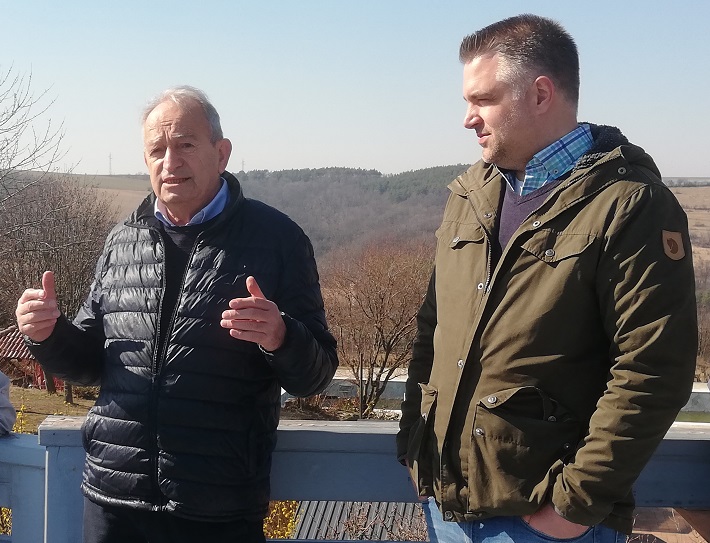
Ákos (left) and wine manager András Lőrincz (right) show me around the winery as part of the Hungarian Wine Summit.
Ákos says: “For me, wine and Hilltop are my life. It fills me with pride being able to work in such a fantastic place of production, in such a beautiful environment, from such excellent varieties, and that we can bring so many kinds of wine to the wine lovers’ table.”
Hilltop, the largest winery in the region, offers wine tourists the opportunity to sleep in a large barrel (below). The winery also has a restaurant and swimming pool.
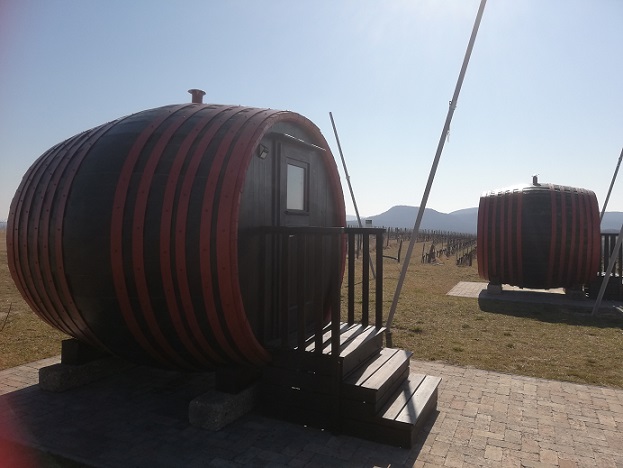
Other award winners in the Premium & Luxury Drinks section of the Paris Packaging Week design competition, who will also collect their prizes during ceremonies on June 29 and 30 at Paris Porte de Versailles, include Perrier-Jouët’s ‘lighted label’ and Le Petit Baroudour’s Bio’teille cardboard wine bottle.


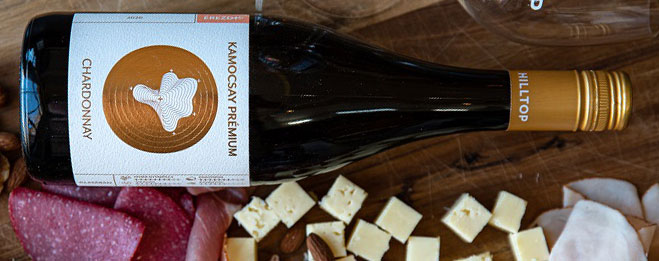










.png)






